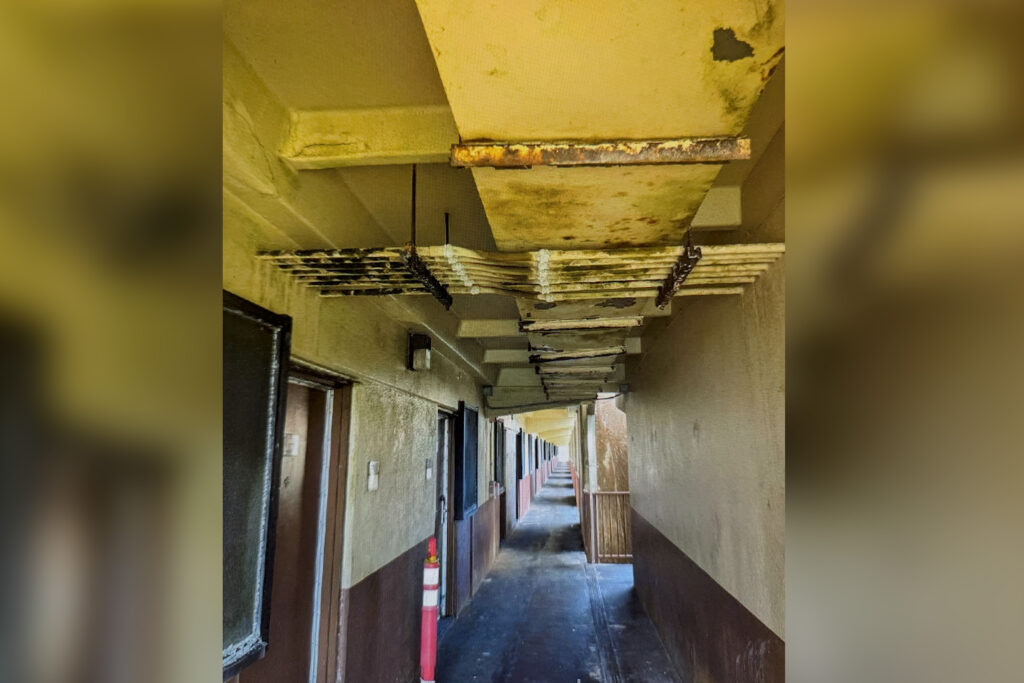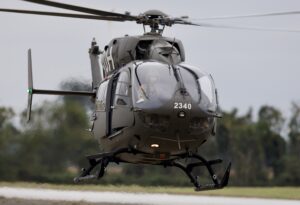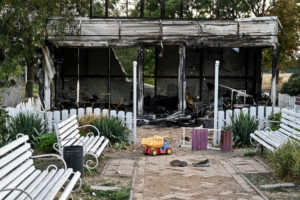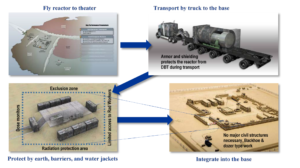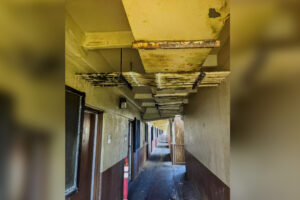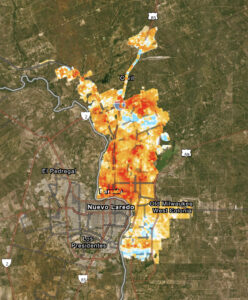Mold-infested walls, exposed electrical wiring and other subpar living conditions at Andersen Air Force Base’s military barracks in Guam prompted a recent Navy-wide review of all unaccompanied housing, according to a new investigative report from an independent government watchdog.
After Navy Secretary John Phelan saw Andersen’s Palau Hall barracks during a May 2 visit, he immediately ordered sailors and Marines to be moved out within 10 days, according to a report published by the Project on Government Oversight, or POGO, last week.
Photos of Palau Hall barracks obtained by POGO show exposed wires, walls with mold that had been painted over and damaged plumbing.
“I actually thought the buildings were condemned,” Phelan told POGO. “When we pulled up to them and saw what shape they’re in, I was shocked.”
By May 22, three weeks after Phelan’s visit, 25 Marines and 48 sailors had left the barracks.
About 21,000 people affiliated with the U.S. military live in Guam, a U.S. territory that houses Andersen Air Force Base, Naval Base Guam and Marine Corps Base Camp Blaz.
The report claims Phelan’s move to open new barracks at Camp Blaz ahead of schedule last month was, in part, a response to the lackluster conditions he witnessed at Andersen.
After Phelan’s visit, Vice Adm. Scott Gray, commander of Navy Installations Command, sent a scathing email to Navy leaders May 5, describing “clearly unacceptable living conditions” at the barracks, according to an email obtained by POGO.
Gray’s email ordered inspections of all barracks housing sailors to be conducted no later than May 27 and demanded service members be moved to more livable quarters if their barracks were found to be poorly maintained.
In the email, Gray instructed inspectors to use the “Washington Post” test, in which those looking at living conditions should ask themselves whether they could defend the state of the barracks if a report in the legacy paper were published, according to the report.
In an interview with POGO, Gray acknowledged some Navy barracks could be classified as being in poor condition and pledged a “colossal effort” to improve sailors’ quality of life.
“I’m not going to let up until we get to where we need to be,” Gray told POGO. “Where I can say I am proud of every barracks that we have.”
Conditions in other barracks at Andersen were not markedly different from those of Palau Hall, according to an Air Force spokesperson who spoke to POGO.
There are five permanent party dormitory facilities at the Guam base, according to the Air Force.
When reached for comment, the Air Force reiterated its commitment to providing safe and adequate living conditions for airmen.
Barracks 2030 isn’t a ‘fix it and forget it’ effort, USMC leaders say
“We prioritize permanent party unaccompanied housing requirements with dedicated facility sustainment, restoration, and modernization funds in accordance with our 4-year Dorm Master Plan,” an Air Force spokesperson told Military Times in an emailed statement.
Dorm leaders inspect facilities daily, and if degraded conditions are observed, immediate repairs, as well as long-term investments, are provided, according to the spokesperson.
The spokesperson identified damage from Typhoon Mawar in May 2023 as a contributing factor to barracks conditions and said the service was prioritizing funds for renovating dorms and providing alternate housing options to service members.
The Navy also pledged its unwavering dedication to service members.
“Sailors’ well-being is a priority for the Navy and it’s critical to their wellness to have a safe, comfortable place to call home, whether they’re staying on a Navy base or in barracks belonging to another Service, such as with Andersen Air Force Base,” said Destiny Sibert, a Navy spokesperson.
POGO interviewed a Naval officer, who spoke under the condition of anonymity for fear of retaliation, about their experience being stationed on the island.
“Anybody that’s been to Guam can tell you … if you’re living on base, you’re going to be in crappy quarters,” the officer told POGO, according to the report.
Subpar living conditions in military barracks have long been a problem for many junior service members, and the services have taken steps in recent years to address them. The Marine Corps has pledged nearly $11 billion to overhaul its barracks as part of a massive housing renovation effort dubbed Barracks 2030. The program, which Marine Corps leaders said won’t officially start until 2026, will add new furniture to housing and repair rooms.
Meanwhile, the Trump administration’s recently introduced “Big Beautiful Bill,” which passed the House on May 22 and is awaiting confirmation in the Senate, includes $1 billion in barracks maintenance for the Army, Navy, Air Force and Space Force, the report said.
The report’s author, René Kladzyk, told Military Times over the phone that she was still receiving anonymous tips regarding the Guam base’s poor conditions after the report’s publication.
While sailors and Marines had been moved out of the barracks, 430 airmen and soldiers remained, according to Kladzyk.
“I think that it’s important to emphasize that although we saw a pretty sweeping response from Navy officials to learning about these conditions at Andersen Air Force Base, we didn’t see the same response from Air Force officials who I reached out to over email,” Kladzyk said.

